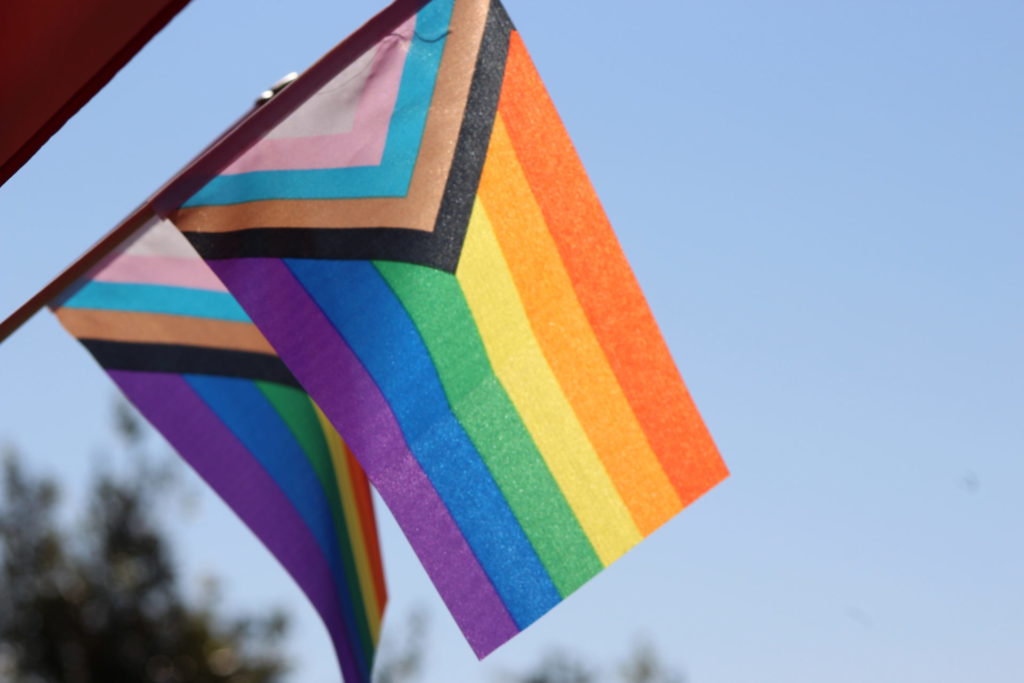In 1978, queer artist and drag queen Gilbert Baker bundled eight multi-colored fabric strips together, creating the first documented pride flag. From hues of hot pink to turquoise, each stripe was met with its own meaning.
In an act of unity and visibility, Baker and a crew of volunteers flew the first batches of handmade flags in the 1978 San Francisco Gay Freedom Day parade.
After discovering a six-striped flag was easier to mass produce, Baker and his team set out to distribute his creation, which eventually became a world-wide symbol.
Today, nearly 45 years later, Las Positas faculty and staff joined together to celebrate the campus’ raising of the pride flag for the very first time. The event, decorated with rainbow buntings, stickers and balloons, hosted 4 speakers to convey the significance of the flag’s addition.
While LPC offers LGBTQ resources on their website, among education through an LGTBQ studies degree, something was missing—public solidarity.
However, Student Government President and Event Coordinator Lara Wiedenmeier opened with just that. “Today we come together to do something very special… we are openly showing that we support and stand with the LGBTQ community,” Wiedenmeier said.
Afterall, times are changing. As the student body becomes more diverse, it’s important for the school to recognize and foster an equally diverse environment.
Doing so with a wide smile, LPC President Dr. Dyrell Foster noted that the flag doesn’t just represent the college’s diversity. “The flag is a statement to our community that says you are welcome here and you belong here,” Foster said.
Though with the uprising in performative activism popularized during the George Floyd and Black Lives Matter protests in 2020, it’s difficult to determine allyship versus fake activism.
The line between real change and disingenuous interest to seem socially aware is amplified through media. Most notably, the June 2020 Black Out Tuesday campaign, in which social media users posted black screens as a way to show support for Black lives. Regardless of intention, change yields more than performative behavior.
Shawn Taylor, the Director of Student Equity and Success, faced this issue head-on.
“Being an ally and saying you’re an ally is a super easy thing to do. Being an ally really means leveraging the power you have to help those who may not have the same amount of power as you do,” Taylor said.
Though a flag may not appear as a large step, the message it sends is valuable. In terms of further support for LGBTQ students, only time will tell if administrators prove to be genuine allies.
Sophia Sipe is the editor-in-chief of The Express. Follow her @sophiasipe.



